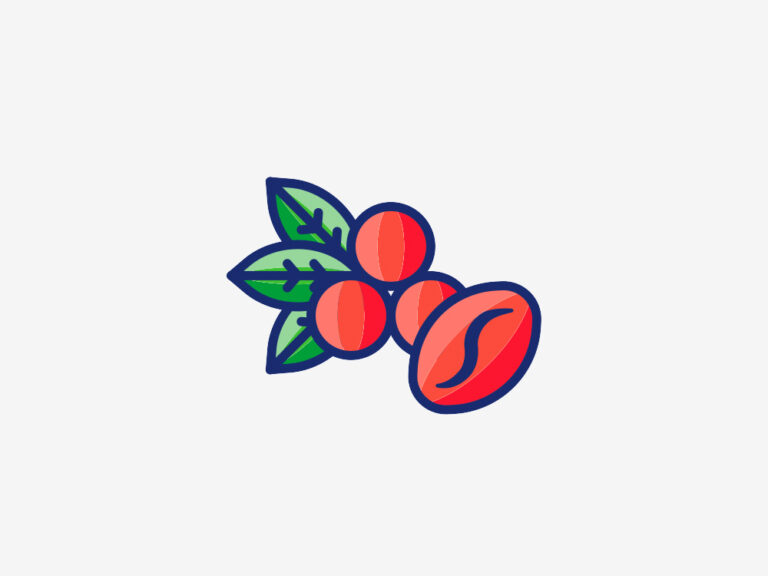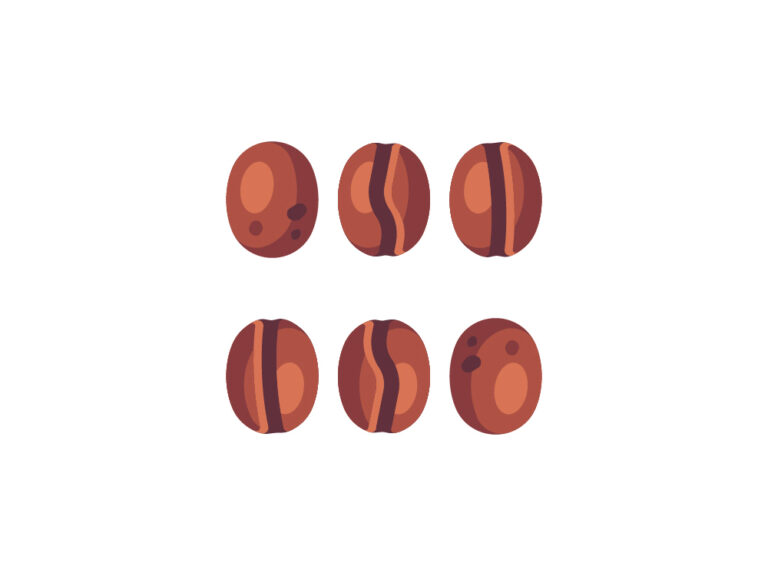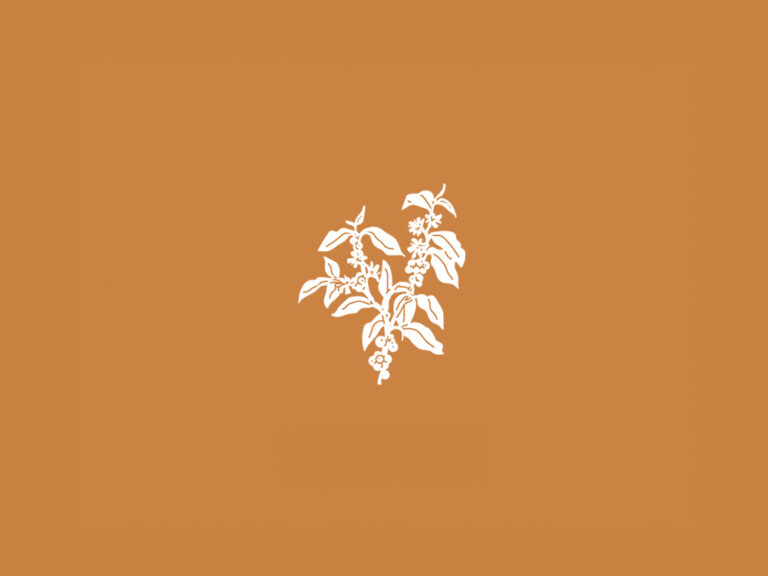
This post may contain affiliate links. As an Amazon Associate and a partner of other brands, I get a small commission if you purchase through my links, at no extra cost from you.
This is a question that most coffee drinkers have asked themselves, from renowned baristas to the most casual of coffee drinkers.
They all know that the answer is probably Colombia, Brazil, or Indonesia but are not too sure where to start and if their preferred flavor comes from one country or another.
So without further ado, let’s find out where do coffee beans originally come from.
Where Do Coffee Beans Come from? – The Country of Origin
Here’s a quick storytime to pinpoint where do coffee beans come from. Your favorite cup of coffee can trace back its legacy to the ancient coffee forests of Ethiopia.


Legend says that there was a goat herder named Kaldi who first discovered the magic that lies within coffee beans.
One fine day, Kaldi noticed that his goats turned extremely energetic after eating certain berries from a tree and they refused to sleep at night.
Amazed by this finding, he decided to report to the local monastery.
The monastery officials then made a drink out of those berries to keep themselves awake during long prayers.
Now the word escaped and moved towards the Arabian Peninsula, and the secret of this beverage, aka coffee, began its global journey and that’s where do coffee beans come from.
How Long Does It Take to Properly Grow A Coffee Plant?
The coffee you gulp down in a few minutes takes years for it to reach your cup.
Your instant coffee might take 2 minutes to brew, but the coffee plant takes around one full year to begin flowering.
Again, it might take another 2-3 years for the coffee bean tree to bear fruits.
Once the coffee plant matures, it can live for 30-40 years when looked after properly.
However, the longevity and productivity of a coffee plant have reduced because of a shift towards sun-grown coffee.
In the sun-grown coffee approach, the coffee bean plants are kept out of their naturally cool and shady environment.
These plants are forced to adapt to intense bouts under the hot sun, thus reducing their longevity due to long-term exposure.
Which Countries Produce the Most Coffee Beans?
Did you ever wonder from which country did you coffee come from?
Although there are a large number of countries that produce coffee, it’s Brazil, Vietnam, and Colombia that grab the biggest market share.
Brazil takes the crown of being the world’s largest producer of coffee.
It has been the highest producer of coffee worldwide for over 150 years and has around 300,000 plantations of coffee spread across 10,000 square miles of landscape. Yes, Brazil’s coffee industry is insanely massive!!


Vietnam grabs the second position on world charts with a production of nearly 1,650,000 metric tons of coffee per annum.
Although the disastrous Vietnam War had caused a gap in coffee production, Vietnam was able to bounce back and expand coffee production from 6,000 tons in 1975 to almost 2 million tons in 2016.
Fans of Arabia beans unite in Colombia! The country is the 2nd highest producer of Arabia beans and ranks 3rd among the Global leaders of coffee production.
Colombian coffee crops were massively hit by a leaf disease in 2008 and 2009 due to heavy rains, causing a disastrous 60% decrease in their coffee production.
However, Colombia regained its market dominance by replacing the crops with rust-resistant varieties.
Steps in Growing and Processing Coffee Beans
Getting your favorite cup of coffee goes beyond just brewing it in a pot. To truly appreciate the richness of your coffee, let’s dive into its journey right from the time it starts to grow.
1. Planting The Coffee Seeds
Planting coffee seeds is usually done during the wet season, allowing the roots to become firmly rooted in the wet muddy soil. The seeds are usually planted on large grounds under shaded nurseries.
The seedlings are frequently watered and are protected from the sharp sun rays until they’re mature enough.
2. Harvesting The Coffee Cherries
It takes roughly 3 to 5 years for newly planted coffee plants to bear fruit. Bright red in color, the fruit is known as a coffee cherry. These coffee cherries turn from deep red to maroon when ready for harvest.
In most plantations across the globe, these coffee cherries are hand-picked and the harvesting process is tedious. However, Brazil has heavily mechanized its cherry collection process.
There are two major ways by which coffee is harvested:
- Strip Picked: Stripping off the cherries from one branch at a time.
- Selectively Picked: Harvesting only the ripe cherries through manual labor.
3. Processing The Coffee Beans
The two methods that are usually employed for processing coffee depending on the location of the plantation:
Dry Method
After picking the coffee cherries from the coffee plant, they are spread out on large surfaces to dry under the sun.
To prevent any spoilage, the coffee fruit is covered at night and during rains. Depending on the season, this process continues for several weeks for each batch of coffee cherries to bring the moisture content below 11%.
Wet Method
The fruit is dried with only the parchment skin left on, right when it’s harvested from the coffee bean tree. After that, a pulping machine is used to separate the skin and the pulp from the freshly harvested cherries.


Where Do Coffee Beans Come from – Let’s Get into the Cultivating Process
The coffee beans processed by the wet method need to be dried to around 11% moisture content so that they can be safely stored.
Known as parchment coffee, these dried coffee beans are packed in jute bags before being shipped to the mill.
At the mill, two important processes take place – hulling and polishing.
Initially, the hulling machinery removes the endocarp (upper layer) from the wet-processed coffee. Then it’s polished where the silver skin of the beans is removed by the machine.
After the coffee beans are processed at the mills, they’re referred to as ‘green coffee’. This green coffee is packed into jute/sisal bags and is loaded into shipping containers.
Upon the arrival of the shipment, the cuppers (coffee tasters) test the beans to ensure that the quality of the coffee is up to their standards.
An expert cupper can taste over a hundred samples of coffee per day. It’s impressive how they’re able to accurately detect the subtle differences between the coffee beans despite tasting so many of them every day.
Quality Checks You Should Do Before Buying Coffee Beans
Buying coffee beans goes far beyond checking brands and label
. Where do your coffee beans come from, what texture do the beans have, which type of beans suit which occasion- are all considerations that you should keep in mind before purchasing your best.
1. What Types of Coffee Beans Should I Purchase?
The two most popular types of coffee are Arabica and Robusta. Robusta beans are usually less expensive and have twice as much caffeine when compared to Arabica.
Robusta is usually known for the strong and bitter taste that it leaves in your mouth, whereas Arabica is sweeter and more versatile.
The other types of coffee beans are Liberica and Excelsa that are not very popular in the western markets.
2. Place of Origin
It’s easy for any roaster to claim great quality and taste. However, only professional roasters take the time to inform you about where the coffee beans come from and how the processing of those beans gives them a unique flavor.
So, never hesitate to ask questions to your roaster before you buy a bag of your favorite coffee beans.
3. Roast Date
It’s recommended that you search for coffee bags that have the exact date of roast printed on them.
Some stores try to maximize profits and increase shelf life by printing a “best by” date instead of mentioning the date when the coffee was roasted.
Great roasters produce such flavorful coffee that it will rarely sit on the shelf for weeks. Therefore, go for fresh coffee beans whenever possible.
4. Roast Profile
What types of coffee beans do you want? Some people prefer light and floral coffee taste profiles, whereas others prefer strong and brain-awakening coffee.
Use your coffee preferences to guide you through what types of coffee beans you should opt for
You can also keep these points in mind-
Bottom Line
Now that you’re equipped with the information that goes behind a cup of coffee, your next visit to the roastery would be a breeze.
We’ve traced where do coffee beans come from and have seen how the coffee industry thrives globally.
Now that you know what goes behind its production, you can better appreciate the delicious cup of coffee you sip every day.
And you’ve finally made it to the end.
Phew! It’s time to reward yourself with a refreshing brew. Will it be Arabica or Robusta this time?

![The 6 Best Japanese Coffee Brands To Buy [2023]](https://noisycoffee.com/wp-content/uploads/2023/02/Best-Japanese-Coffee-Brands-To-Buy-noisycoffee-768x560.png)




